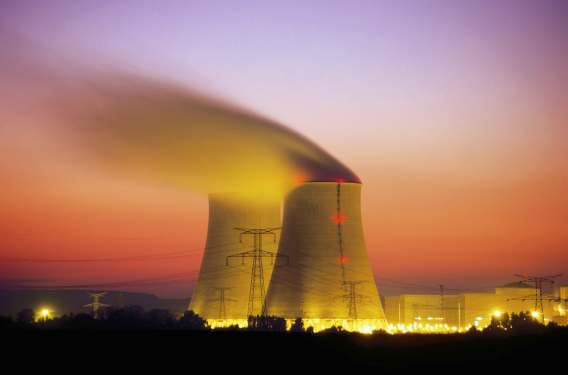Harnessing AI: The Future of Nuclear Power Efficiency

As the world gravitates toward sustainable energy solutions, artificial intelligence (AI) emerges as a pivotal ally for the nuclear sector. Tech innovators are increasingly exploring nuclear power to meet the energy demands of tomorrow, particularly as data centers fuel our modern technological advancements. However, the nuclear industry has long been associated with slow operational processes, raising a critical question: can AI inject the necessary speed into this crucial energy source?
Trey Lauderdale, a notable figure in this endeavor, believes AI holds the key to revolutionizing how the nuclear sector operates. His interest in nuclear energy grew significantly from his interactions with employees at the Diablo Canyon Power Plant in San Luis Obispo, California. These conversations revealed an overwhelming challenge—the vast quantity of documents, roughly 2 billion pages, that encumber efficient operations within nuclear facilities.
Recognizing the need for a solution, Lauderdale established Atomic Canyon over a year ago, investing his own funds initially. The startup is pioneering the integration of AI to assist engineers and compliance officers in swiftly navigating the labyrinth of documentation. Their efforts paid off when they secured a collaboration with Diablo Canyon in late 2024, a milestone that soon attracted attention from other entities in the nuclear industry, sparking further development.
In a recent funding round, Atomic Canyon raised $7 million, primarily backed by Energy Impact Partners. Other notable investors included the likes of Commonweal Ventures and Wischoff Ventures, all eager to support this innovative approach to nuclear power management.
Despite early setbacks in model development due to AI limitations—particularly in the industry’s complex terminology—Lauderdale’s vision remained undeterred. To overcome these hurdles, he engaged with Oak Ridge National Laboratory, renowned for hosting one of the world’s fastest supercomputers, which provided Atomic Canyon with critical computational resources.
Atomic Canyon’s AI utilizes advanced document indexing technique, particularly sentence embedding, designed to enhance the searchability of nuclear documents. This approach, known as retrieval-augmented generation (RAG), leverages large language models to contextualize and retrieve information from specific documents, minimizing errors in responses—a key advantage in an industry where precision is paramount.
For the time being, the startup is honing its focus on document search capabilities, understanding that inaccuracies can lead to frustration rather than fatal errors. Lauderdale emphasizes the importance of a robust system, stating, “You have to nail the search.” The plan is not without ambition; he hopes for a future where AI can generate initial drafts of vital documents while always ensuring human oversight in the process—an essential safeguard in such a high-stakes field.
In summary, the journey of Atomic Canyon signifies a remarkable intersection of AI and nuclear technology. By addressing document management challenges, the startup aims to streamline operations in the nuclear sector, paving the way for a more efficient and responsive energy future.
